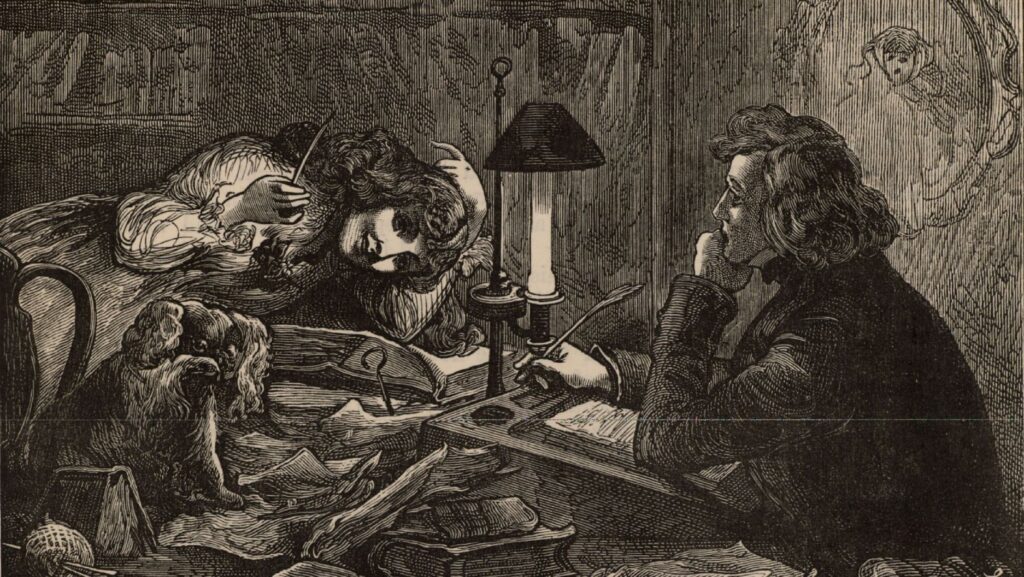Indulge in the Magic of Romance Writing! Unleash Your Content Marketing Skills and Embark on Crafting an Extraordinary Love Novel. Crafting a captivating love story may present challenges, but armed with effective strategies, you can transform your tale into a masterpiece akin to the works of Jane Austen or Nicholas Sparks. From Pride and Prejudice to The Notebook, these stories of love and relationships have a timeless appeal.
However, writing a captivating romance novel isn’t as simple as it might seem. This blog post will explore the key elements that can help budding authors weave a romantic tale that readers can’t put down. In this blog post, we’ll delve into the art of writing a triumphant romance novel. From creating endearing characters that capture readers’ hearts to crafting passionate scenes with tasteful sensuality and understanding the rhythm and structure of romantic narratives, we’ll cover it all. Let’s embark on our journey of writing a contemporary love saga together!
Table of Contents
Themes of Romance Writing
Setting plays a crucial role in romance novels. Whether it’s a small town, a bustling city, or a historical era, your setting should be vividly described, creating a backdrop that enhances the romance. Make your readers feel like they’re there, experiencing the world you’ve built. Familiarize Yourself with the Genre: Grasp the Tropes, Conventions, and Common Themes of Romance Writing.
Exploring the world of romance novels provides invaluable insights into recurring themes and narrative devices. Acquiring a profound understanding of the genre equips readers to anticipate the conventions, tropes, and descriptive styles prevalent in any given romance book. Seasoned romance enthusiasts can readily identify familiar settings and recurring themes when encountering new romance titles. By educating yourself about genre expectations, you can become a connoisseur of romance novels.
Shape Your Characters

Shape Your Characters: Define Their Personalities, Motivations, and Goals. Character development lies at the heart of crafting a resonant story. Thoughtful consideration must be given to each character’s personality, motivations, and goals. What propels them forward? What do they strive to achieve?
Delving deeply into these questions enables writers to breathe life into their characters on the page. Dialogue serves as a powerful tool for revealing character traits, allowing the addition of details such as accents, dialects, and subtle emotions to create dynamic individuals. Exploring character motivations and aspirations breathes vitality into their stories and emotions, immersing readers in the world of your narrative.
Establish a Compelling Plot
Ensure a Clear Beginning, Middle, and end. A captivating plot is the cornerstone of a romance novel that keeps readers eagerly flipping through the pages. To construct a robust plot, each chapter should contain surprising elements that advance the overall narrative. Sprinkling pivotal moments throughout the novel maintains reader engagement and sustains an enjoyable pace. By implementing these techniques, you create an immersive experience that leaves readers yearning for more, even as they approach the long-awaited conclusion.
Create Emotional Depth
Emotion is the heart of a romance novel. Your readers should feel the characters’ joy, fear, excitement, and heartbreak as if it were their own. This emotional connection is what will keep them turning the pages. Use descriptive language and realistic dialogue to portray the emotional journey your characters undertake.
Craft Authentic Dialogue
Writing dialogue poses a significant challenge for authors, as it must serve the dual purpose of advancing the plot and reflecting the story’s overall tone. To create relatable and believable dialogue, writers must go beyond mere plot progression and develop conversations that offer intriguing insights into their characters. In the realm of romance writing, dialogue should exude a spark and chemistry between the characters, accurately reflecting an authentic relationship. Skillfully executed dialogue breathes life into a story, granting characters depth and dimension and captivating the audience.
Infuse Tension and Climax
Engage Readers with anticipation. Sustaining reader engagement and anticipation relies on a combination of plot, pacing, and emotional resonance. Plot twists can be deployed to add spice and inject gripping moments of tension, which reverberate emotionally for both characters and readers. This approach maintains an interesting narrative pace, neither too slow nor too fast, creating urgency within each moment as it steadily builds towards a captivating climax.
Pay Attention to Details

Enliven Every Scene with Vivid Language and Evocative descriptions. In the realm of romance novels, scene setting demands meticulous attention to detail. Create an immersive atmosphere that draws readers in, enabling them to inhabit the setting alongside your characters.
Employ descriptive language to depict the setting vividly, allowing readers to envision its appearance while still leaving room for their imagination. Engage all senses—sight, smell, hearing, taste, and touch—to fully stimulate the reader’s experience. Additionally, capture emotions through powerful words and grant believability to each character by incorporating physical descriptions and revealing personality traits. The fusion of these elements establishes an all-encompassing journey that holds readers spellbound until the resolution of the story.
Create a Satisfying Ending
A satisfying ending is crucial in romance novels. Whether it’s a happily ever after (HEA) or a happy for now (HFN), readers should close your book feeling satisfied and hopeful. A romance novel is an escape from reality, and a satisfying ending is the perfect way to wrap it up.
By incorporating these elements into your romance novel, you’ll be well on your way to crafting a compelling love story. Remember, a successful romance novel isn’t just about the romance, it’s about crafting a narrative that resonates with readers, evokes emotion, and tells a captivating story. With these tips, you’ll not only improve your writing skills, but also make your content more discoverable for your target audience through an effective SEO strategy. Dive into the realm of romance writing and let your unique love story unfold.
Conclusion
Writing a romance novel is an exhilarating yet demanding endeavor. It necessitates understanding the genre, developing characters that forge a connection with readers, constructing an engaging plot, crafting genuine and insightful dialogue, instilling tension, and guiding the story through captivating twists and turns.
Moreover, filling each scene with meaningful details and evocative descriptions ensures a truly immersive experience. However, remember that you don’t have to embark on this journey alone! With their extensive experience in helping authors realize their dreams, you can be confident that your manuscript will surpass your wildest expectations. Brace yourself for an enthralling love story—after all, few things captivate readers like a remarkable romance!



